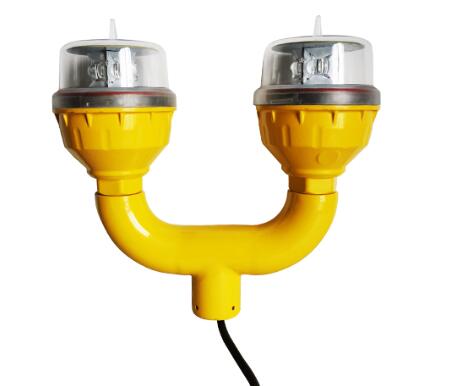Unveiling the Double Obstruction Light: A Guardian of Safe Skies and Waters
In an era where safety and visibility are paramount in both aviation and maritime operations, the double obstruction light emerges as an unsung hero. This innovative lighting system, with its unique design and functionality, plays a crucial role in preventing accidents and ensuring the smooth passage of aircraft and vessels.
The double obstruction light is engineered to provide enhanced visibility, even in the most challenging environmental conditions. Comprising two distinct light sources, it emits a powerful and consistent signal that can be easily detected from long distances. This dual - light configuration not only increases the likelihood of the light being seen but also helps to eliminate any potential blind spots, ensuring that the obstruction is clearly marked at all times.
One of the key features of the double obstruction light is its versatility. In the aviation sector, these lights are installed on structures such as tall buildings, communication towers, and wind turbines. Their bright and distinctive illumination serves as a clear warning to pilots, alerting them to the presence of these obstacles in their flight path. This is particularly important during low - visibility conditions, such as fog, rain, or at night, when the risk of collision is significantly higher.

For maritime applications, double obstruction lights are mounted on lighthouses, oil rigs, and other offshore structures. They act as beacons, guiding ships safely through busy waterways and around hazardous areas. The ability of these lights to withstand harsh marine environments, including saltwater corrosion, strong winds, and extreme temperatures, makes them a reliable choice for maritime safety.
The technology behind the double obstruction light has evolved significantly over the years. Modern versions often incorporate advanced LED (Light - Emitting Diode) technology. LEDs offer numerous advantages over traditional lighting sources, such as lower energy consumption, longer lifespan, and higher brightness. This not only reduces the operational costs associated with maintaining the lights but also ensures that they remain functional for extended periods without the need for frequent replacements.
| double obstruction lights |
Another important aspect of the double obstruction light is its compliance with international safety standards. Organizations such as the International Civil Aviation Organization (ICAO) and the International Maritime Organization (IMO) have set strict guidelines regarding the installation, operation, and performance of obstruction lights. Manufacturers of double obstruction lights adhere to these standards, ensuring that their products meet the required specifications for safety and reliability.
In addition to their primary function of marking obstacles, double obstruction lights also contribute to the overall efficiency of aviation and maritime operations. By clearly indicating the location of potential hazards, they enable pilots and mariners to plan their routes more effectively, reducing the time and fuel consumption associated with detours. This, in turn, has a positive impact on the environment by minimizing carbon emissions.
| double obstruction light |
Looking ahead, the future of double obstruction lights seems promising. With the continuous advancement of technology, we can expect to see even more sophisticated features being incorporated into these lighting systems. For example, the integration of smart sensors and communication technologies could enable real - time monitoring of the lights' status, allowing for immediate detection and resolution of any malfunctions.
The double obstruction light is an essential component of modern safety infrastructure in both aviation and maritime industries. Its ability to provide enhanced visibility, withstand harsh conditions, and comply with international standards makes it a reliable and effective solution for preventing accidents and ensuring the safety of personnel and assets. As we continue to strive for safer skies and waters, the role of the double obstruction light will only become more important in the years to come.
